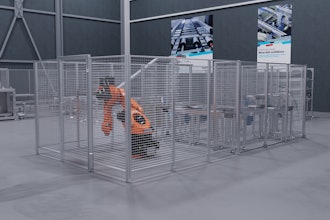Implementing a new Enterprise Resource Planning (ERP) system or modernizing an existing one through system integration is among the most difficult things any company can do.
Take a look around and you’ll agree: The corporate landscape is littered with wrecked partnerships and costly litigation over failed ERP and other business application implementations.
When you consider what’s involved in an ERP implementation, it’s really no wonder.
Getting all of a company’s various data systems not simply talking to each other but efficiently, accurately and instantly sharing data can be a long, bumpy road with many potholes along the way.
Even now, in 2014, many companies still don’t have effective and efficient ERP systems in place and well integrated with their financial or supply chain management systems.
How to Avoid the Biggest Pitfalls of ERP Implementation
In my years of helping companies overcome ERP issues, I’ve just about seen it all. The best advice I can offer is to carefully study any solution you’re thinking about using and to ask lots of questions. Look before you leap. Then look again.
Then, when you’re ready to jump, don’t rush past the planning phase. It’s ironic that the “P” in ERP stands for “planning,” because any analysis of the many famously disastrous implementation stories we’re all familiar with will reveal clear planning failures and rushed schedules.
ERPs touch on every department, every worker, every business activity, every function, every form, every data set, every transaction and every communication. Accordingly, you need to take an equally comprehensive and complex approach to planning: every need, every contingency, every possibility, every potential barrier, every potential risk factor, every likely point of weakness that could be encountered must be identified and addressed.
Another rule of thumb is to think hard about the team you select to manage an ERP implementation – both in term of the group’s size and what individuals are included.
If there are too many chefs, so to speak, involved in the planning and development of the new or modernized ERP system, the end result is likely to be a system that can do lots of things only moderately well – and often at a much higher cost than anticipated. On the other hand, if the planning and development of a new or modernized ERP doesn’t include the right executives and professionals, the result is likely to be a system with gaping holes.
It is critically important that the CEO, CFO and CIO of a company properly define the scope and budget of an implementation and then assemble a planning and development team that includes the right number – and mix – of technical and frontline workers to reach the goal on time and on budget. That will help keep the natural temptation and pressures to expand the project’s scope and increase its budget under control.
Watch Out for the Best-of-Both-Worlds Pitch
Another bit of advice is to watch out for vendors who promise you a proven, bolt-on system that, nevertheless, can be customized to meet your particular needs.
That’s a best-of-both-worlds approach that appeals to practical buyers, and that’s why it’s used. It makes sense because buying a proven system is much cheaper than having one custom-built. It also makes sense because having some degree of customization means being able to continue some of the company’s unique existing business practices.
The problem is that instead of bolting on a proven system and customizing only 15 to 20 percent of it, what typically happens is that far more of the bolt-on system ends up needing customization to be usable. That dramatically inflates the cost of the project. And it usually creates lengthy delays and off-the-chart levels of frustration throughout the company.
The key to avoiding those negative results goes back to the planning process. Once a company determines what its scope and budget for a new or upgraded ERP system should be, senior management should firmly commit the company to staying within that scope and budget. That almost certainly will require making some hard choices about what to customize and what not to customize.
Fortunately, commercial off-the-shelf solutions (COTS) have come a long way. Organizations in need of automating a whole range of tasks used to need a lot of customization or special products. Today, battle-tested, proven off-the-shelf solutions can handle some of the most difficult jobs, intuitively and with a minimum of changes. And adopting such a solution is often far less expensive than rewriting millions of lines of code.
Four Things to Keep in Mind When Selecting a COTS Solution
Still, not every COTS solution will be right for your company. Again, look before you leap. We’ve all seen the failures, and almost always, they can be traced to a breakdown in one of four areas:
- Adaptability – Solutions with a high level of adaptability are platform agnostic. They mesh well and are fully functional in any legacy hardware or software environment that you already have installed. It will even work with a mainframe. That helps protect the sizeable investment you already made in your current technology stack – not just the operating system but also web servers, app servers, data sources, browsers, mobile platforms and so on. Sometimes an ERP implementation will fail because a product couldn’t adapt to an environment where the company was already strategically committed.
- Configurability – By this, we mean the ability to change settings within a solution so they fit your needs precisely. Implementations fail when you can’t do things like rename categories to suit your company’s terminology, or you can’t program certain rules or scenarios. Again, the app should bend to your needs, not the other way around. When you have to bend the organization, the result is employees who simply “opt out” – a worst-case scenario when you’re trying to instill efficiency.
- Seamless Integration – Whether your company uses PeopleSoft, Infor, SAP or Oracle, your business processes solution will not provide real-time command visibility unless it is seamlessly integrated. Look for a solution with a sophisticated integration engine that makes it easy to feed downstream systems that, for example, pay expense reports and invoices. It also needs to integrate with upstream applications, most commonly human resource information systems.
- Cost-effective migration – This might be the factor that sinks the most implementations. Some software makes data migration so difficult that companies spend huge sums of money and many months getting it to work the way they need and get staff trained to use it. Just about that time, the ERP provider withdraws support for the version they bought, and they’re faced with yet another costly migration to the latest version. It’s a vicious cycle that can be avoided by adopting a solution with a one-time data configuration. That way, you won’t have to reboot with each new release.
By screening potential ERP partners on those measures, you will greatly increase your chances of success.
Apptricity Corporation provides mission-critical supply chain management and integrated finance solutions to Fortune 500 companies, small and midsize enterprises and government organizations across the globe. Apptricity software and solutions mobilize any enterprise with unprecedented levels of real-time information and business intelligence so management has visibility into every action and transaction within the enterprise and among its partners, customers and suppliers. For more information, visit www.apptricity.com.






















